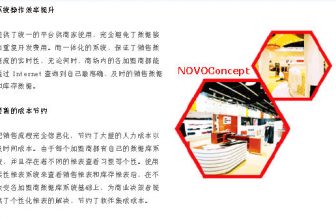
Ritani uses RFID solutions in jewelry stores to increase sales
[ad_1]
US jewelry company Ritani is planning to launchRFIDSolution, in this way, jewelry retail stores can automatically display the information consumers want to see. At the same time, consumers can also share jewelry pictures and detailed descriptions with friends and relatives before buying jewelry to seek their advice. More importantly, store administrators can also obtain sales data including item viewing, purchase rate, and employee sales.
The purpose of the solution is to create an offline shopping environment with an online shopping experience, making it easier for consumers to obtain product information. Ritani installed EPC Gen 2 ultra-high frequency (UHF) passive RFID tags on the jewelry and built an RFID reader on the display. This system is installed in 180 retail stores selling Ritani products across the United States.

Ritani is a wholesaler specializing in custom-designed rings, pendants, earrings and other jewelry. In 2012, the company established the Ritani.com department to sell custom jewelry online with partner retailers. Consumers can design Ritani jewelry online and pick it up directly at the nearest store.
In addition to online sales, Ritani tries to create a good in-store shopping experience to attract consumers. The company has 180 cooperative retail stores, and each store has a display cabinet with 65 pieces of jewellery. In this way, consumers can look at the appearance of the jewelry on the spot and try it on. Ritani vice president of marketing Mark Kini said that under normal circumstances, consumers will share photos of wearing jewelry to friends, but these photos are usually some low-quality pictures, and can not convey too much information.
At the same time, Ritani will install a UHF on the back of the product display cabinetReaderAnd install some RFID tags on each jewelry price tag. Gini declined to disclose the specific manufacturers of the tags and readers, saying it was a trade secret.
Each jewelry tag has a unique ID code. The information stored on the tag includes product serial number, category, picture, specification and price, which are all stored on Ritani’s server. Retailers can connect to the company’s server through iOS-related applications.
When a consumer wants to view a special style of jewelry, the salesperson can take it out of the display cabinet and place it within the reading range of the reader. In this way, the reader reads the tag ID number, and then transmits the secondary information to the back-end server. Then, the iPad in the retail store will automatically receive the information pushed by the server. In this way, consumers can view the jewelry information on the tablet. Through this application, consumers can also share this information with friends via email or social platforms to get their suggestions.
Gini said that the technology can provide consumers with a better in-store experience and increase jewelry sales. At the same time, it can also provide retailers with other value. Using this system, the store manager can obtain information such as how often the jewelry is viewed and its purchase rate.
Gini said that the plan will begin in the next 30 to 60 days. If it goes well, Ritani also plans to provide this program to all retail partners.
Ritani exhibited the system at the JCK trade show in Las Vegas this week. Sweeney said the technology is very popular among retailers.
(Exclusive manuscript of rfid world network, please indicate the source author for reprinting!)
[ad_2]






